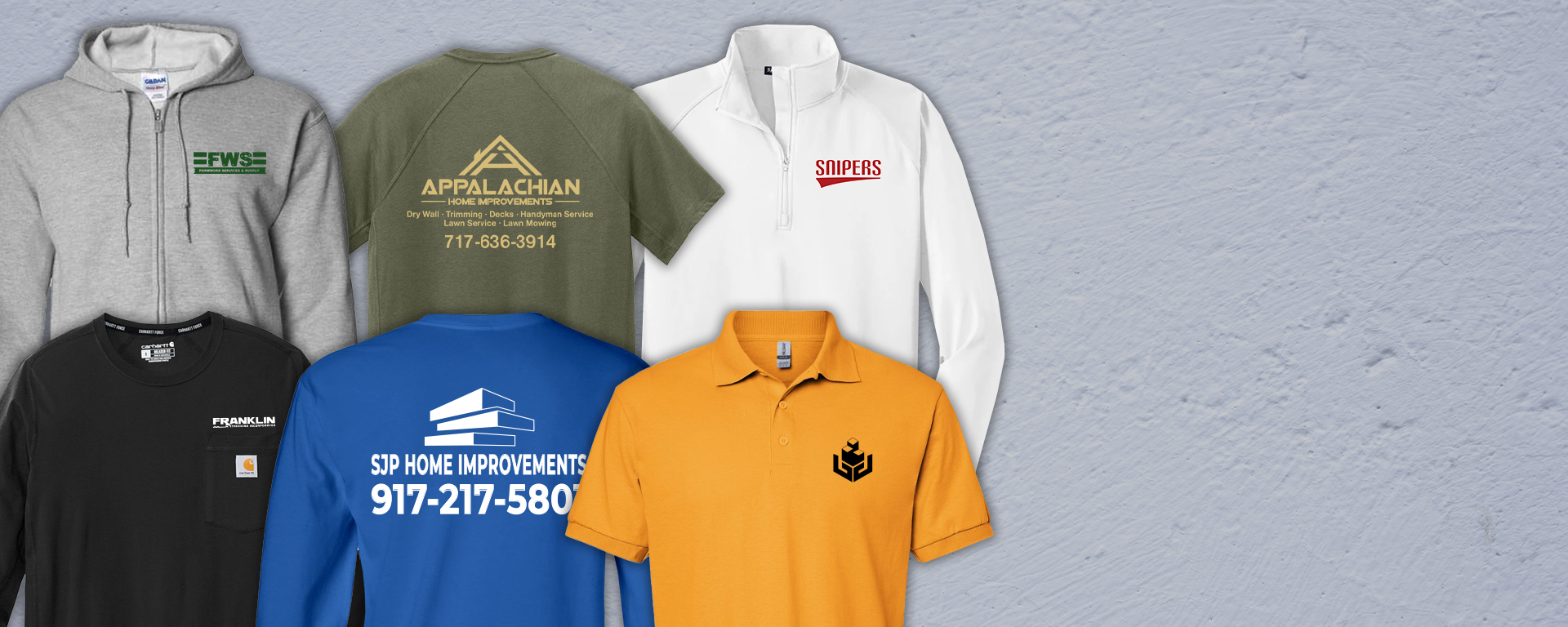How Branded Clothing Can Boost Confidence Through Fabric and Feel
Wiki Article
Recognizing Clothes: The Value of Textile Choices in Your Closet
The selection of fabric in clothing plays an essential duty in both aesthetic appeals and functionality. Various products provide differing levels of breathability, longevity, and convenience, straight influencing the user's experience. Understanding these nuances can enhance one's wardrobe noticeably. Several neglect how these choices can affect not simply personal design, however likewise sustainability. What fabric choices could redefine your closet and straighten it with both design and obligation?The Role of Textile in vogue and Capability

Common Material Kinds and Their Characteristics
When picking garments, understanding the attributes of typical textile kinds is necessary for making educated choices. Cotton, a widely-used natural fiber, is known for its adaptability, breathability, and gentleness, making it appropriate for sportswear and day-to-day garments. Linen, another natural choice, boasts excellent moisture-wicking homes and an unique structure, suitable for cozy climates.Wool, frequently favored for its heat and sturdiness, varies in fineness; merino wool is soft versus the skin, while coarser types are used for outerwear. Synthetic materials like polyester and nylon use sturdiness and resistance to wrinkles, making them preferred for activewear and traveling garments. Blends, which combine natural and synthetic fibers, can enhance performance while maintaining comfort. By identifying these fabric characteristics, people can choose clothing that aligns with their lifestyle and visual preferences.Breathability and Convenience: Choosing the Right Fabrics for Different Climates
Picking the appropriate textiles for numerous environments can substantially improve convenience and general wearability. Breathable products are vital in hot environments, as they allow air circulation and dampness dissipation. Fabrics such as cotton, bed linen, and moisture-wicking synthetics properly draw sweat away from the body, maintaining the user cool and dry. Alternatively, in cooler climates, thicker textiles like woollen or fleece give insulation while maintaining breathability, guaranteeing heat without overheating.Additionally, the choice of fabric weight plays an essential duty; lightweight textiles are preferable for summer season, whereas heavier options are fit for winter months wear. Understanding the distinct residential properties of each fabric enables people to dress properly for differing weather condition conditions. Ultimately, picking comfy and breathable fabrics tailored to details environments can considerably enhance everyday convenience and improve the general experience of putting on clothes.Durability and Care: Just How Fabric Affects Durability of Your Wardrobe
Selecting the appropriate products can substantially affect the longevity and care demands of a wardrobe. Fabrics such as cotton and polyester are known for their durability and ease of upkeep, making them perfect for day-to-day wear. In contrast, delicate materials like silk and lace need more careful handling and specialized cleaning approaches, which can increase the moment and initiative required for care. Branded Clothing.Durability is additionally affected by the material's weave and surface; tightly woven textiles tend to stand up to damage much better than freely woven options. Furthermore, artificial blends typically give boosted toughness, combining the ideal qualities of multiple fibers.Understanding the care instructions for each fabric is important, as improper drying out or washing can cause premature wear. Eventually, selecting sturdy materials can cause a longer-lasting wardrobe, lowering the regularity of substitutes and adding to a more lasting fashion choiceThe Effect of Fabric on Fit and Silhouette

Sustainable Material Selections: Making Eco-Friendly Decisions
The influence of textile prolongs past fit and silhouette to encompass ecological variables, motivating a growing interest in lasting fabric selections. Eco-friendly fabrics, such as natural cotton, hemp, and Tencel, are gaining traction among consumers that prioritize sustainability in their wardrobes. These materials are usually generated with fewer chemicals and water, lowering their ecological footprint.Additionally, recycled textiles, made from post-consumer waste, provide an ingenious solution to the textile industry's contamination issue. Brands significantly embrace transparency in their sourcing methods, permitting customers to make enlightened decisions concerning their purchases.Choosing sustainable fabrics not only sustains moral methods but also motivates the garment industry to take on more responsible manufacturing techniques. As awareness of ecological concerns rises, individuals are urged to show on the long-term influence of their textile selections, fostering a motion towards an extra ecologically mindful and lasting method to fashion.
Raising Style: Exactly How Textile Can Change an Outfit
While several may concentrate on color and cut when picking an outfit, the selection of textile plays an essential duty in boosting design and enhancing overall look. Different materials share distinctive state of minds and messages; for instance, silk exhibits luxury and elegance, while jeans uses a casual, relaxed ambiance. The texture and drape of a material can significantly change the silhouette, with organized textiles supplying a polished look and softer ones developing an extra fluid, loosened up aesthetic.Moreover, the weight of the fabric affects wearability throughout seasons. Lightweight textiles like linen and cotton are perfect for summer, while much heavier materials such as woollen and velour offer heat and beauty in cooler months. Recognizing textile homes, such as breathability and stretch, additionally empowers individuals to make enlightened choices that improve comfort without compromising design. Ultimately, the best fabric can change an outfit from regular to phenomenal, making it an important consideration in any kind of wardrobe.Frequently Asked Concerns
Just how Do I Determine the Material Web Content of My Clothes?
To identify material material, one can analyze treatment tags, conduct melt tests for fiber identification, or consult fabric examples. These techniques help distinguish materials, ensuring educated options for apparel care and upkeep in everyday wear.Can Material Choice Affect My Mood or Self-confidence?
Textile selection can substantially affect a person's state of mind and self-confidence. Branded Clothing. Certain materials may evoke feelings of convenience or style, while others can really feel unflattering or limiting, eventually affecting self-perception a knockout post and emotional wellness throughout the dayWhat Fabrics Are Finest for Delicate Skin?
For people with delicate skin, natural textiles like bed linen, bamboo, and cotton are typically recommended. These materials are breathable, hypoallergenic, and much less most likely to trigger irritability, making them suitable choices for comfort and skin wellness.How Do I Properly Laundry and Treatment for Various Fabrics?
To effectively care and wash for various fabrics, one have to consider each material's particular needs, including temperature level settings, detergents, and drying out methods, guaranteeing longevity and keeping the material's initial top qualities for optimal use.Exist Particular Fabrics for Athletic or Efficiency Use?
Athletic or efficiency wear typically uses fabrics such as spandex, nylon, and polyester. These materials are made for moisture-wicking, breathability, and flexibility, boosting motion and comfort throughout exercises while supplying durability and support. On the other hand, in cooler environments, thicker fabrics like woollen or fleece offer insulation while maintaining breathability, guaranteeing warmth without overheating.Additionally, the option of material weight plays an essential role; lightweight textiles are better for summer, whereas heavier choices are fit for winter wear. In contrast, fragile materials like silk and lace call for more cautious handling and specialized cleansing methods, which can raise the time and effort needed for care.Durability is additionally influenced by the textile's weave and surface; firmly woven materials have a tendency to resist wear and tear far better than freely woven choices. In comparison, rigid fabrics can limit motion but provide a timeless, sleek look.Moreover, the density and appearance of the fabric can influence the aesthetic understanding of body form. click for source The effect of textile extends past fit and shape to encompass environmental elements, triggering a growing rate of interest in lasting material selections. The appearance and drape of a material can considerably alter the shape, with organized textiles giving a sleek look and softer ones creating a much more fluid, kicked back aesthetic.Moreover, the weight of the textile influences wearability across periods.Report this wiki page